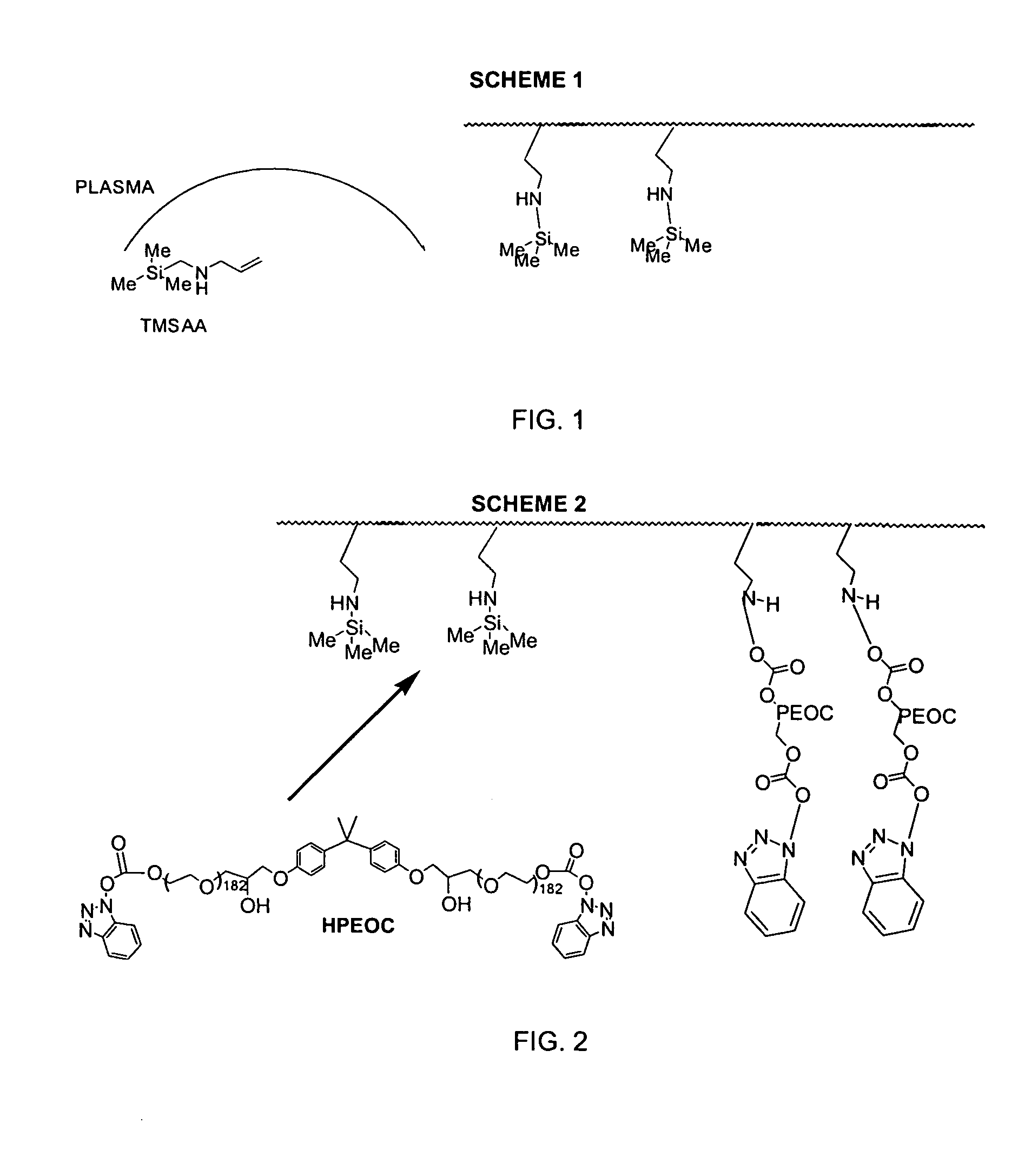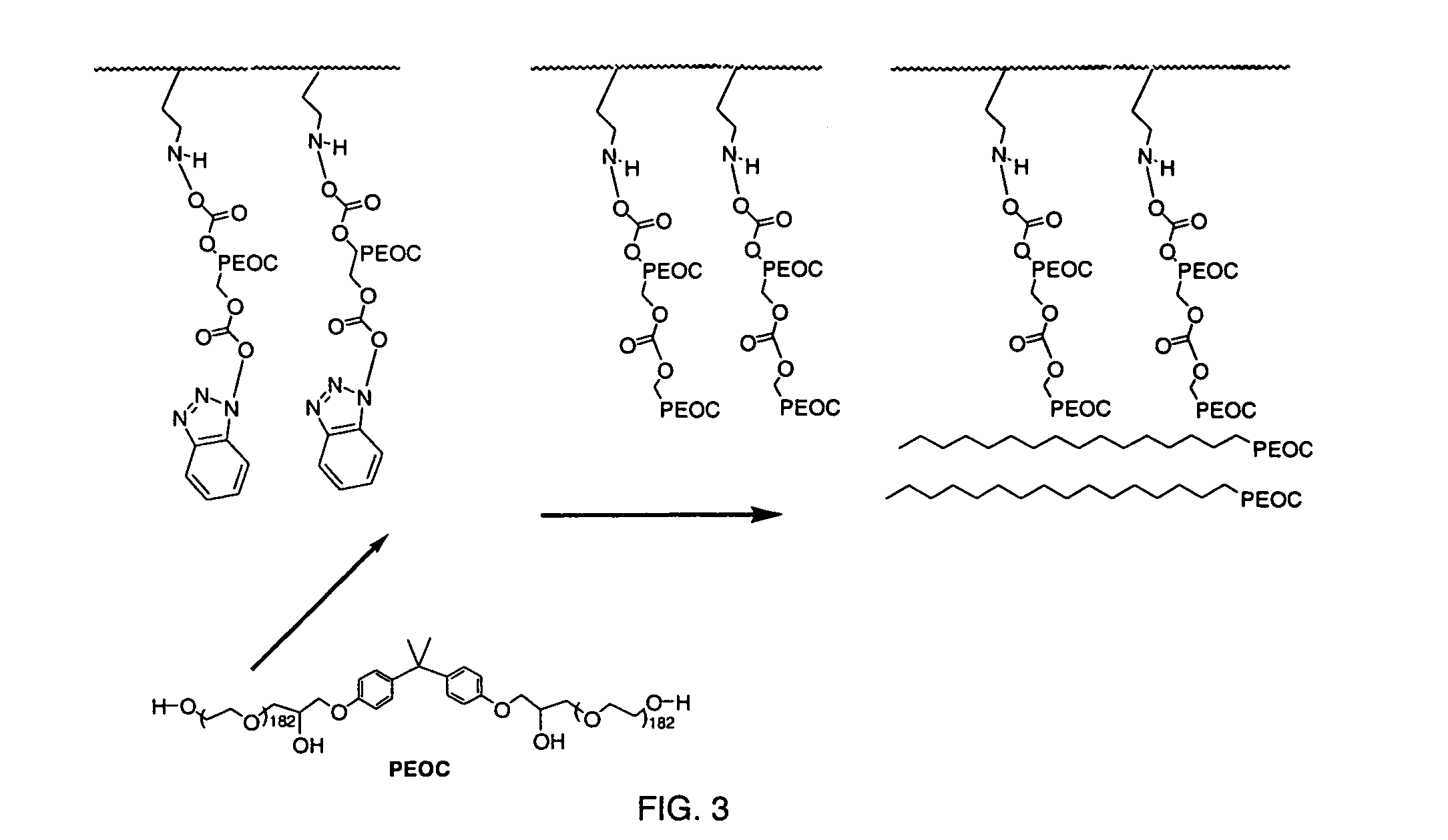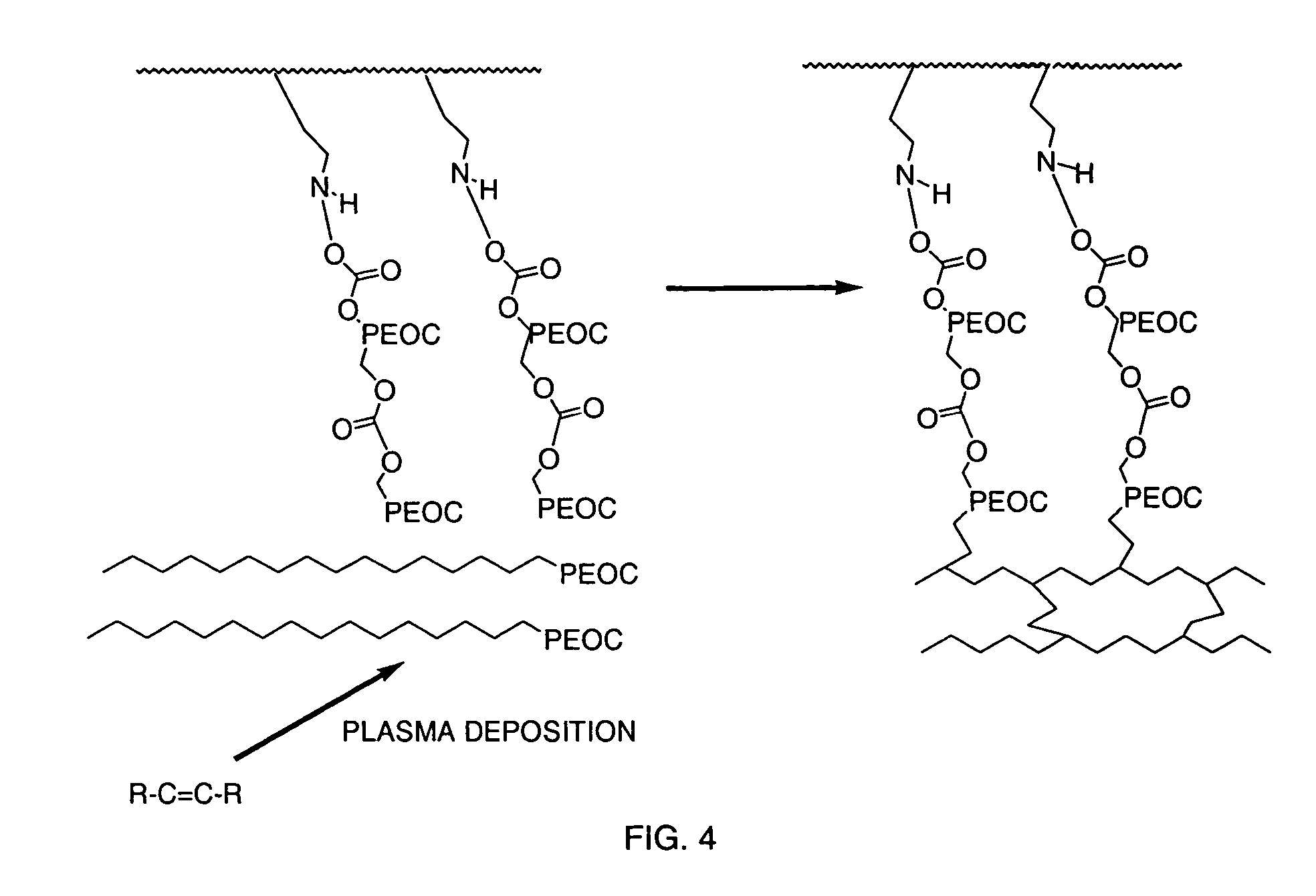Medical device with plasma cross-linked hydrophilic coating
a technology of cross-linked hydrophilic coating and medical devices, which is applied in the direction of pharmaceutical packaging, synthetic resin layered products, packaging, etc., can solve the problems of not being able to resist contact with tissue or abrasive substrates, not being able to function well in medical devices, and not being able to promote blood clot formation,
- Summary
- Abstract
- Description
- Claims
- Application Information
AI Technical Summary
Benefits of technology
Problems solved by technology
Method used
Image
Examples
example 1
TMSAA Plasma Grafting and HPEOC Reaction
[0052]Strips of polyethylene were used as the substrate. TMSAA was integrated onto the plastic by plasma grafting with operational parameters of 8 minutes deposition time at 65 mTorr, 45 W, and a flow rate of 42 sccm. The TMSM plasma grafted strips were rinsed for 5 minutes in methylene chloride, and then immersed in a solution of 5% HPEOC in methylene chloride for 20 minutes. Unreacted HPEOC was removed in a 5 minute rinse in methylene chloride.
example 2
Stainless Steel Modification
[0053]Stainless steel wafers (0.75 cm×0.75 cm) were treated in a glow-discharge plasma with a mixture of NH3 / O2 for 45 seconds. The plasma was generated at 110 W and pressure of 50 mTorr using a total mass flow rate of 50 sccm. The materials were then treated by glow-discharge plasma with the siloxane derivative TMCTS for 4 seconds, causing the TMCTS to polymerize and attach to the substrate. The TMCTS plasma was generated at 83 W, 55 mTorr, and a flow rate of 84 sccm. TMSM was then integrated into the film by plasma grafting with operational parameters of 4 minutes of deposition time, 65 mTorr, 35 W, and a flow rate of 42 sccm. The resulting coated steel wafers were rinsed for 5 minutes in methylene chloride. The wafers were immersed in a solution of 5% HPEOC in methylene chloride for 20 minutes. Unreacted HPEOC was removed in a 5 minute rinse in methylene chloride.
example 3
TMSM Crosslinking of PEOC / HPEOC
[0054]Strips of polyethylene were used as the substrate. TMSM was integrated onto the plastic by plasma grafting with operational parameters of 8 minutes of deposition time, 65 mTorr, 45 W, and a flow rate of 42 sccm. The TMSM plasma-grafted polyethylene strips were then rinsed for 5 minutes in methylene chloride, followed by immersion in a solution of 5% HPEOC in methylene chloride for 20 minutes. Unreacted HPEOC was removed in a 5 minute rinse in methylene chloride. The HPEOC reacted polyethylene strips were then immersed in a 10% solution of PEOC for 20 minutes and air-dried. The PEOC and HPEOC were then cross-linked in a plasma process using plasma crosslinking with TMSM as the crosslinking agent. The TMSAA cross-linked plasma had operational parameters of 16 minutes of deposition time, 65 mTorr, 45 W, and a flow rate of 42 sccm. The materials were then immersed in methylene chloride for 5 minutes and air-dried.
PUM
| Property | Measurement | Unit |
|---|---|---|
| Metallic bond | aaaaa | aaaaa |
| Hydrophilicity | aaaaa | aaaaa |
| Polymeric | aaaaa | aaaaa |
Abstract
Description
Claims
Application Information
 Login to View More
Login to View More - R&D
- Intellectual Property
- Life Sciences
- Materials
- Tech Scout
- Unparalleled Data Quality
- Higher Quality Content
- 60% Fewer Hallucinations
Browse by: Latest US Patents, China's latest patents, Technical Efficacy Thesaurus, Application Domain, Technology Topic, Popular Technical Reports.
© 2025 PatSnap. All rights reserved.Legal|Privacy policy|Modern Slavery Act Transparency Statement|Sitemap|About US| Contact US: help@patsnap.com



